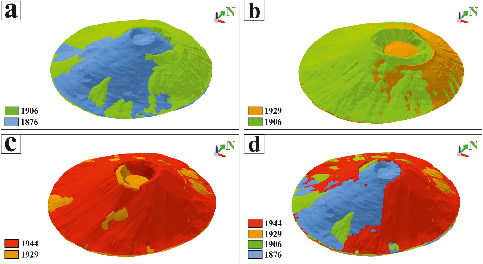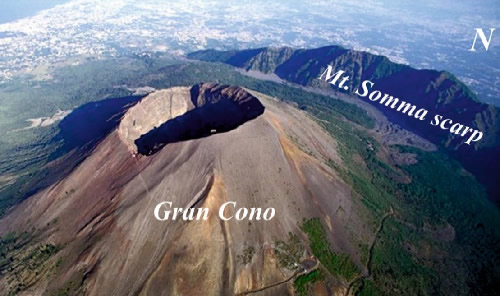The use of historical cartography and ALS technology to map the geomorphological changes of volcanic areas: A case study from Gran Cono of Somma-Vesuvius volcano

Bisson M., A. Tadini, R. Gianardi, A. Angioletti (2021).
Geomorphology, volume 380, https://doi.org/10.1016/j.geomorph.2021.107624.
Abstract
The eruptive activity of a volcano modifies its surface topography through morphological changes generated by the deposition of emitted volcanic material and resulting gravity-driven processes, which can form accumulation of material in addition to the most common erosional phenomena. Mapping and quantifying such morphological changes allow to derive new data useful to better describe and understand the eruptive history of the volcano itself. Nowadays, one of the mostly used method to identify such morphological changes consists of comparing Digital Elevation Models (DEM) of the volcanic area before and after an eruptive event. If the eruptive event is referred to periods prior to 1980’s, the only method to reproduce DEMs consists of elaborating the historical cartography that is often available only in paper format. In this work we aim to prove the reliability of this approach, presenting a study on the morphological changes (from 1876 to 1944) of the summit caldera of the Somma–Vesuvio volcano (Italy). For the first time, we compare DEMs derived from historical maps (1876, 1906 and 1929) and a DEM dated 2012 obtained by remote sensing. The four models of the caldera, digitally reproduced at the same spatial resolution, are morphologically investigated through specific maps derived from the DEMs and a set of height profiles. In addition, further morphometric analyses and accurate quantifications in volume and surface are presented and discussed for a portion of the Somma-Vesuvio summit caldera, represented by the Gran Cono edifice. Considering the different typology of the source data used in this study, it is also provided a discussion on the respective accuracies that, especially for the historical maps, represent a crucial point for obtaining DEMs able to reproduce topographies more realistic as possible. For this reason, despite data source were processed following rigours criteria, the calculations of volume, surface and distance related to the morphological changes of the volcano are associated to an accurate quantification of the error. Following this, the main results obtained in this study are: i) the identification of several past volcanic deposits and the estimation of the related thicknesses, both in good agreement with published literature; ii) the quantification of the morphological changes of the Gran Cono from 1876 to 1944 resulting in a volume and surface growth of 133 × 106 m3 (±5%) and ~0.14 km2, respectively; iii) the identification of a possible migration path of the centroid of the Gran Cono crater along the SW-NE preferential direction during the investigated period.



Devi effettuare l'accesso per postare un commento.